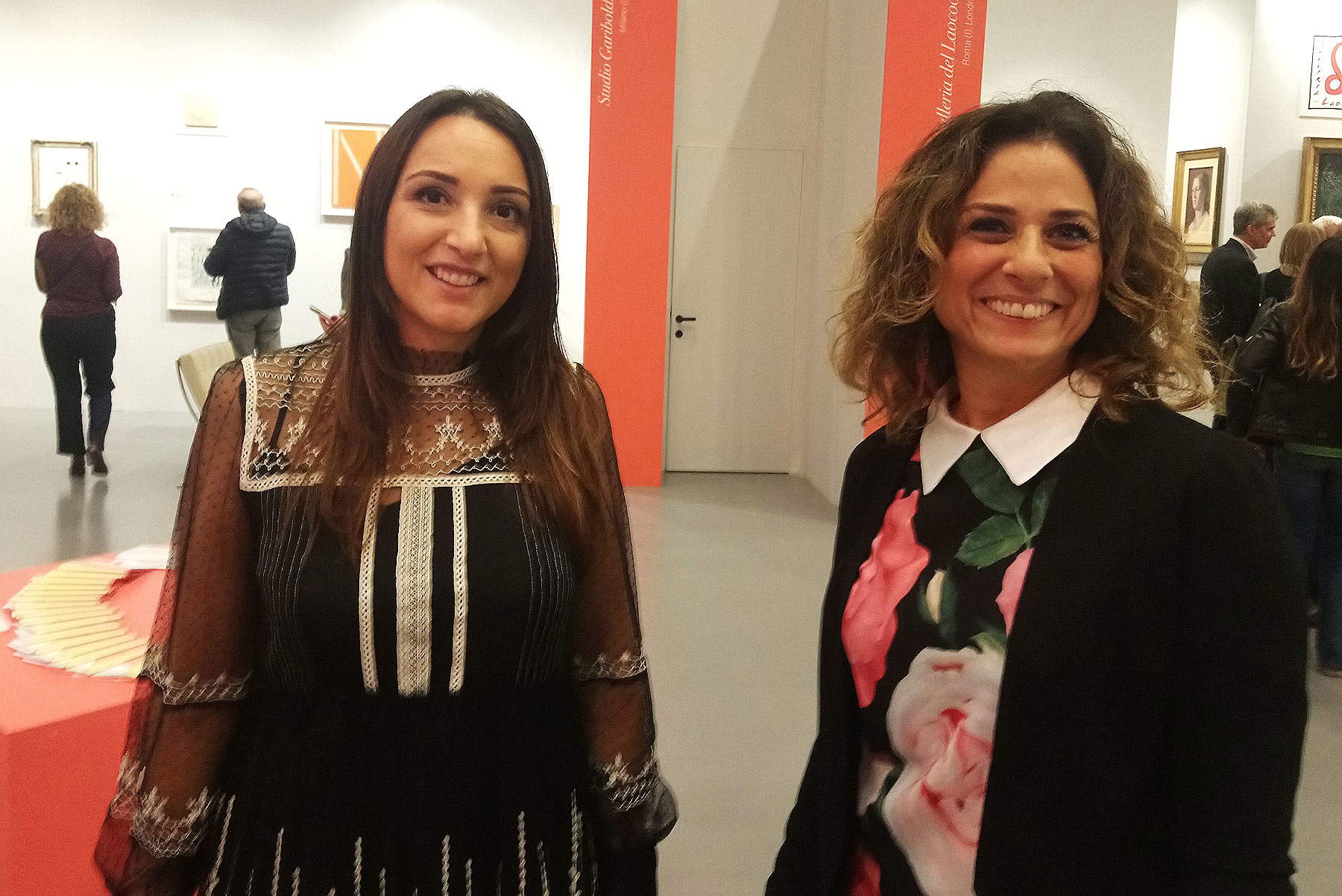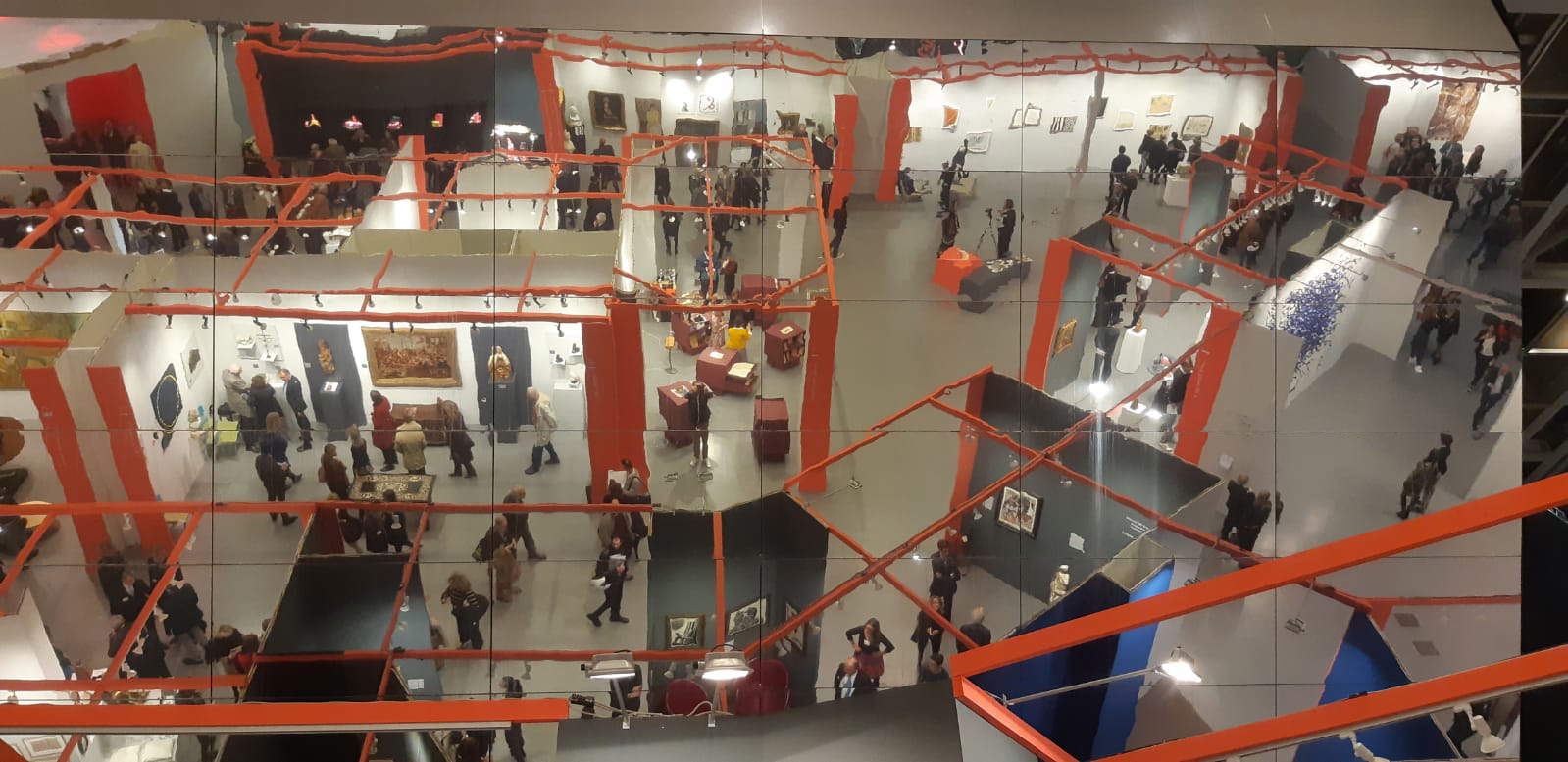Ginevra Pucci and Stefania Poddighe: "The market supports culture, but without culture there would be no market."
Flashback, the ancient and contemporary art fair held every year in Turin, for this 2019 comes to its seventh edition: as per its characteristic, this year there is a central theme (the Wanderers), and as every year the quality is very high. Waiting for our top ten of the most interesting works that the public will find in this edition of the exhibition-market (at Pala Alpitour from October 31 to November 3), we recorded “hot” impressions, on the day of the preview, of the directors Stefania Poddighe and Ginevra Pucci. Interview by Federico Giannini.
 |
| On the left Stefania Poddighe, on the right Ginevra Pucci |
 |
| Flashback 2019 |
FG. Flashback is a fair that every year always holds important surprises for the public of collectors and enthusiasts. If we wanted to point out this year’s main novelties to those who follow us, what would we suggest?
SP-GP. Of course, the main novelty is precisely the artworks: they are all new, there is nothing already seen in previous editions. In addition, the layout has completely changed, and the layout of the fair itself is radically different. Again, we would like to point out that one of the main features of Flashback is that it is a big story divided into chapters, and every year we present a different chapter. We find this amusing, especially if we think about the fact that art fairs do not have a title or a topic: so it is a bit of a peculiar thing, all our own, born since the first edition. This year’s chapter is dedicated to Wanderers, with the double meaning of those who “err” in the sense that they wander aimlessly, and those who “err” in the sense that they can also make mistakes as they wander. This topic was fundamental in developing all the work behind the seventh edition of Flashback, both with the galleries (with respect to the choice of works), and in the set-up, the ways in which the fair was enjoyed, and the part related to talks, videos, and exhibitions. We started with the concept, and then, as a result, we made everything that was necessary to structure the fair.
How does the theme of the Wanderers fit into the long narrative of Flashback, now in its seventh chapter? Why this theme in particular?
It is necessary to start with a premise: our main narrative is that art is all contemporary: at Flashback we live in a temporal space in which the works, although belonging to different historical periods, are of contemporary fruition ... and therefore they are all contemporary. The wanderer is the one who wanders and has no destination: the idea is to enjoy the work without prejudice (perhaps with respect to the period of dating), that is, to experience the work for what the work gives the viewer at the moment when work and viewer come into contact. The work, in fact, is activated only in the presence of its viewer: if there is no viewer, the work does not exist. The wanderer is the one who stands before the work in its path and, without any prejudice, experiences it for what the work communicates.
There are not only prejudices against works, but perhaps also against fairs....
We don’t know if there are real prejudices against fairs, but we do know that when it comes to the market, it can happen that those who deal with an art that is more related to the museum and the exhibition actually have some prejudices. And so we often say that the fair allows you to have a special contact with the work: if I know that that work can be purchased, consequently, and already automatically, that work becomes part of my everyday life, it becomes part of my everyday life, I know that I can have it in my home as well. It doesn’t matter if I don’t end up buying it: what matters is the perception, the way you approach the work. The museum cools certain feelings, in a sense “sacralizes” the work. For us, the work, placed in the dimension of a fair, becomes everyday. This aspect is then also related to all the projects we do in the city during the year: the concept is that art is something everyday and, in this way, becomes something available to everyone.
And the way Flashback perhaps makes art more “available to everyone” is the Opera viva project, which brings the city into direct contact with art. For the 2019 edition, the Flashback special project Opera Viva is an urban art project, conceived by Alessandro Bulgini and curated by Christian Caliandro. It consists of a number of posters displayed in Turin’s Bottesimi Square. Why this choice?
Opera viva has been a project since the first year. We must say that we are very close to De Dominicis: our concept of art that is all contemporary was born in this way. And in the same way, the Opera Viva project was also born: Flashback is an organism that is constantly mutating, living, that must also be in contact with the territory that surrounds it. This is why, in 2015, we also decided not to stay focused only on the days of the fair, but to get out of the spaces dedicated to art, and use what already exists (in the case of the Opera viva 2019 project we are talking about municipal posters: the project consists precisely of some posters, so something that already exists), to give art to everyone, allowing everyone to enjoy it, perhaps even unknowingly. But this is really our mission: to make usable to the widest public even the perhaps sometimes more complicated or less immediate things that even contemporary art can present.
And how are collectors responding to your proposal?
Very well: we have reached the seventh edition because, evidently, a whole series of features have concatenated that work. In short, Flashback works because there is interest from the market, from collectors: in short, from everyone. The galleries come back if the collectors are there, the collectors come if there are quality works, as happens with us. So the fair works because the system works.
What about the audience of enthusiasts? Can we say that Flashback is still a cultural event, regardless of the value it naturally holds for the collecting world and the market?
When we think about how to present Flashback, one of the phrases that characterizes us is that culture and market are part of the same equation. Luciano Pistoi used to say that the first act of criticism is buying. It means that the moment I decide to buy something, I have introjected that thing and it has that certain value for me. Culture and the market could not live separately: how can you say that the works that are for sale here have nothing to do with culture? One is the support of the other: the market is the support of culture, but without culture there would be no market.
One last line: what are your expectations for this 2019 edition of Flashback?
We already consider ourselves happy the moment we see, like today, people wandering around and showing a satisfied air. For us, this is very important. Living by expectations is not a characteristic of us; we set many small goals from time to time, without stretching ourselves too far. We set small goals that we try to achieve with our own strength and our own way, because we have our own way of being, which we do not want to distort in any way. Already, however, we can say that we are very satisfied: we believe we have created the right content and container, and we hope that others will perceive Flashback as we gave birth to it and launched it.
Warning: the translation into English of the original Italian article was created using automatic tools. We undertake to review all articles, but we do not guarantee the total absence of inaccuracies in the translation due to the program. You can find the original by clicking on the ITA button. If you find any mistake,please contact us.




























